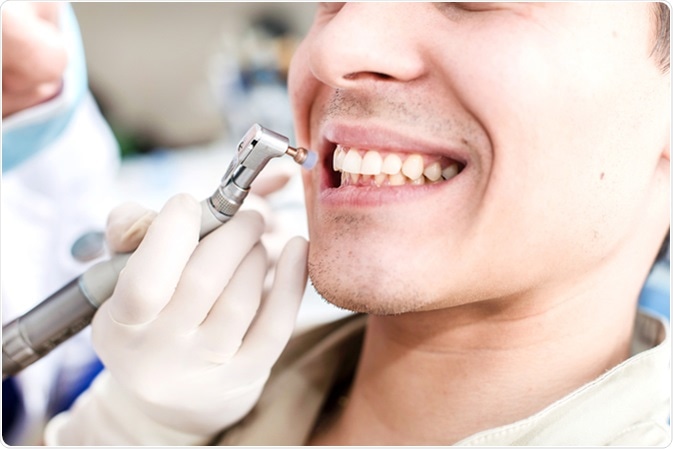Site Under Development, Content Population and SEO, Soft Launch 1st January 2020
Tooth polishing is a dental procedure, which is used for the prevention of teeth problems. It also makes teeth appear whiter, stain-free, and glistening. This procedure improves dental health and aesthetics of the teeth.

Earlier, tooth polishing was routinely done as a part of dental prophylaxis. However, soon it was realized that the overuse of this technique erodes outermost covering of the tooth structure. The loss of the outer structure makes teeth more vulnerable to stains and plaque accumulation. Also, repetitive use of this procedure removes the protective fluoride layer surrounding the teeth.
These days, dentists do not recommend tooth polishing as a routine dental procedure, and a careful case selection is done prior to this procedure.
Tooth polishing is a procedure which not only polishes the teeth but also removes the dental stains, plaque, and microorganisms formed on the outer surface of the teeth.
The main advantage of tooth polishing over the tooth scaling (deep cleaning of the teeth) is that it is a painless procedure. Also, patients experience clean and smooth teeth instantaneously after the procedure.
There are two types of dental stains – endogenous and exogenous. Endogenous stains are internal stains which are caused due to certain dental defects such as developmental or drug-induced enamel hypoplasia. Exogenous stains are external stains, which arise due to poor dental habits and smoking.
Tooth polishing is beneficial in removing only the exogenous stains, and cannot remove the internal or endogenous stains.
Prophylaxis paste is applied on the area of the tooth surface which requires polishing. Some pastes having bigger particle sizes are more potent in removing the external stains and plaque. Some of the dental practitioners prefer using these pastes as they remove the dental stains easily and quickly. However, these pastes have a high abrasive strength, and can lead to the loss of the tooth structure.
Prophylaxis pastes which have smaller particle sizes make the tooth surface cleaner, lustrous, and smooth. These pastes also make the tooth surface less prone to plaque and stain accumulation. However, polishing with these pastes is a laborious and a time-consuming procedure.
Some key factors which make tooth polishing more effective are as below:
Tooth polishing should initially be performed with coarse abrasion, and then should be followed by fine abrasion. This gradual shift from coarser to finer abrasion results in scratches lesser than 0.5 mcm in size. These scratches have a diameter lesser than the wavelength of the visible light, thereby making the tooth surface appear more shiny and lustrous.
However, the abrasive agent should be carefully selected as the hardness of the abrasive agent should not exceed the hardness of the surface to be polished.
Tooth polishing instruments are both manual and engine-driven. Manual polishers are used by the dentists to manually polish the tooth surface with the help of their hands, whereas engine-driven polishing instruments require handpieces. Tooth polishing is usually performed with the help of mechanical device and a polishing agent.
Hand-held polishing instruments include:
Engine-driven instruments are:
This technique uses the polishing fluids to polish the tooth surfaces. This technique has an advantage over the other methods as it causes minimal or no damage to the tooth structure. Hydroxyapatite polishing fluid and silicon carbide abrasive fluid are used to polish the tooth surface by this technique.